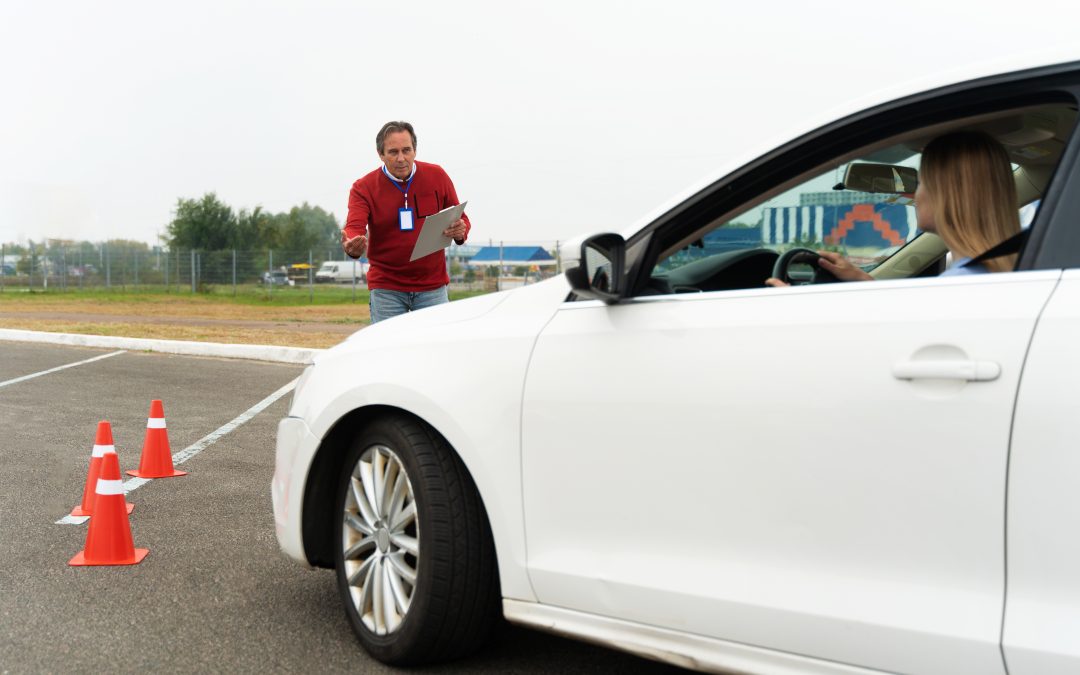Lane changing can be a daunting task, especially in heavy traffic or during peak hours. However, it is an important skill that every driver must master to ensure their safety and the safety of others on the road. In this post, we will cover everything you need to know about lane changing in Orange Park. From understanding the need for efficient lane changing to basic rules and common mistakes while changing lanes, we have got you covered. We will also provide step-by-step guidance on safely changing lanes, handling busy lanes during peak hours, anticipating other drivers’ actions, and practicing different scenarios to become proficient in lane changing.
Understanding the Need to Master Lane Changing
Safely changing lanes is vital for smooth traffic flow and reducing the risk of accidents. Mastering lane changing can save valuable time during your commute while enhancing the overall driving experience. Developing lane changing skills contributes to becoming a confident driver. By understanding the need to master lane changing, you can navigate the roads of Orange Park, Florida, with ease and efficiency. Email us at [email protected] for more information.
The Importance of Efficient Lane Changing
Efficient lane changing plays a crucial role in ensuring a smooth flow of traffic and maintaining the required speed limit on highways. It helps prevent congestion and delays by allowing vehicles to move seamlessly between lanes.
Basic Rules of Lane Changing in Orange Park
When changing lanes in Orange Park, it is important to follow some basic rules to ensure safety and smooth traffic flow. Always use your turn signals to indicate your intention to change lanes and check your mirrors for oncoming traffic before making a move. Give sufficient space and time to other drivers when merging and adhere to proper lane discipline, following the road markings. Remember to prioritize safety at all times when changing lanes in Orange Park.
Common Mistakes While Changing Lanes
Neglecting to use turn signals can confuse other drivers, increasing the risk of accidents. Failing to check blind spots before changing lanes is another common mistake that can lead to potential collisions. Abrupt lane changes without signaling not only pose a danger to yourself but also to other drivers on the road. It’s crucial to accurately judge the speed and distance of oncoming traffic to ensure a safe lane change. Lastly, not observing proper lane etiquette can cause frustration and potentially escalate situations with other drivers. Remembering these common mistakes can help you become a more proficient lane changer.
The Risk of Not Signaling
Not signaling while changing lanes creates confusion and unpredictability for other drivers, compromising road safety. This failure to communicate your intentions can lead to collisions, as other drivers may not anticipate your lane change. Signaling is crucial in establishing communication and coordination between vehicles, ensuring a smooth flow of traffic. Neglecting to use turn signals can result in traffic violations and fines. It is essential to prioritize safety on the roads by using your indicators when changing lanes.
Overlooking Blind Spots
Overlooking blind spots when changing lanes can be extremely dangerous. Blind spots are areas around your vehicle that cannot be seen through mirrors. Failing to check blind spots increases the risk of colliding with other vehicles. It is crucial to regularly check blind spots to ensure the safety of lane changes.
 Steps to Safely Change Lanes
Steps to Safely Change Lanes
To safely change lanes, start by using your indicators to signal your intention. Next, check your mirrors for any approaching vehicles. Glance over your shoulder to check blind spots before changing lanes. Gradually merge into the desired lane while maintaining a safe following distance. Lastly, smoothly adjust your speed to match the flow of traffic. By following these steps, you can ensure a safe and efficient lane change.
Using Indicators and Mirrors Effectively
Using indicators and mirrors effectively is crucial for safe lane changing. Indicators inform other drivers of your intention to change lanes, promoting smooth traffic flow. Mirrors provide a clear view of surrounding vehicles before executing a lane change, preventing surprises for other drivers. By consistently checking mirrors and using indicators, you enhance road safety and reduce the risk of accidents. Remember, effective use of indicators and mirrors is essential in mastering the art of lane changing in Orange Park.
Judging the Speed and Distance of Oncoming Traffic
Accurately gauging the velocity and proximity of approaching vehicles is paramount for safe lane changes. The ability to estimate a suitable gap is crucial in ensuring a successful maneuver. However, misjudging the speed of oncoming traffic can lead to risky actions. Consistent practice enhances judgment skills, making it easier to make informed decisions when changing lanes. It is essential to remain aware of the traffic surrounding you, allowing for confident and secure lane changes. Remember, mastering this skill is vital for navigating the roads of Orange Park safely and confidently.
How to Handle Busy Lanes during Peak Hours?
To navigate busy lanes during peak hours, plan your route in advance to avoid congestion. Stay patient, maintain a safe distance, and avoid abrupt lane changes. Pay attention to traffic signals, signs, and lane closures. Utilize navigation apps for alternative routes or to monitor traffic conditions. Consider carpooling or using public transportation to reduce congestion.
Tips for Smooth Lane Changing in Heavy Traffic
Maintaining a safe distance from the car ahead is crucial in heavy traffic. Indicating your intention to change lanes with your turn signals helps alert other drivers. Always remember to check your blind spots before making any lane changes. It’s important to merge gradually into the desired lane, matching the speed of other vehicles.
Role of Defensive Driving in Lane Changing
Defensive driving plays a crucial role in lane changing, allowing drivers to anticipate potential hazards and maintain awareness of surrounding vehicles. By regularly scanning mirrors and using turn signals, drivers can communicate their intentions effectively. Anticipating the actions of other drivers helps avoid collisions and promotes responsible and cautious lane changes. By incorporating defensive driving techniques into their lane-changing maneuvers, drivers can enhance their safety and that of others on the road. Remember to stay attentive and employ defensive driving practices for a smooth and secure lane-changing experience.
Mastering the Art of Anticipating Other Drivers’ Actions
To become a master of lane changing in Orange Park, it is crucial to anticipate the actions of other drivers on the road. Watch out for signs that indicate their intention to change lanes, such as turn signals or slight movements. Pay close attention to the positioning and movement of surrounding vehicles, as this can provide valuable clues about their next move. By studying traffic patterns and road conditions, you can predict potential lane changes and adjust your driving accordingly. Anticipate sudden stops, turns, and merges from other drivers to ensure your safety. Being proactive in anticipating others’ actions enhances your overall awareness and promotes safer lane changes.
Practice Scenarios for Perfecting Lane Changing
Practice scenarios are crucial for perfecting lane changing skills. Start by finding an empty parking lot in Orange Park, Florida, where you can practice lane changes without traffic. Begin at slower speeds, gradually increasing as you gain confidence. Focus on smooth transitions when merging into different lanes. To enhance your defensive driving techniques, simulate heavy traffic scenarios. This will help you anticipate potential hazards and develop a responsible approach to lane changing. As you progress, challenge yourself with more complex scenarios to further build your skills.
Getting Comfortable with Night-Time Lane Changes
When driving at night, it’s important to ensure that your headlights and taillights are fully functional for optimal visibility. In low-light conditions, it’s advisable to increase your following distance to allow for better reaction time. If necessary, you can utilize your high beams, but always be mindful of oncoming traffic. To maintain focus on the road, avoid distractions like cell phones. If you’re uncomfortable with night-time lane changes, try practicing on well-lit, familiar roads before venturing into unfamiliar areas. By implementing these tips, you’ll become more confident in navigating the roads after dark.
Handling Lane Changing in Various Weather Conditions
During inclement weather conditions such as rain, snow, or fog, it is crucial to adapt your lane-changing techniques. Decrease your speed to allow for longer braking distances and maintain a safe following distance due to reduced traction. Be cautious of hydroplaning, especially during heavy rain, as it can lead to loss of control. Stay informed about the weather forecast and plan lane changes accordingly. Remember to adjust your driving style based on the specific weather conditions to ensure a safe and smooth lane-changing experience.
What are the Consequences of Incorrect Lane Changing
Consequences of incorrect lane changing include collisions, near-miss accidents, anger from affected drivers, traffic citations, vehicle damage, and negative impact on insurance rates and driving records.
Summing Up: Becoming Proficient at Lane Changing in Orange Park
Becoming proficient at lane changing in Orange Park requires practice, patience, and defensive driving skills. It’s crucial to anticipate other drivers’ actions to ensure safe and efficient lane changes. To build confidence, practice scenarios in different conditions, such as at night or during various weather conditions. It’s important to remember that incorrect lane changes can have serious consequences in terms of safety and finances. By mastering the art of lane changing, drivers can navigate Orange Park’s roads with ease and confidence.
Conclusion
Mastering the art of lane changing in Orange Park is crucial for safe and efficient driving. Effective use of indicators and mirrors, as well as anticipating other drivers’ actions through defensive driving, are essential for avoiding accidents. During heavy traffic, follow tips for smooth lane changes such as judging the speed and distance of oncoming traffic. Practice scenarios like night-time lane changes and handling various weather conditions to perfect your skills. Remember, incorrect lane changing can have severe consequences, including accidents and injuries. By becoming proficient at lane changing in Orange Park, you can navigate the roads with confidence and ensure a safe driving experience.

